Longjing Tea Plantation: Your Guide to China’s Iconic Tea Experience
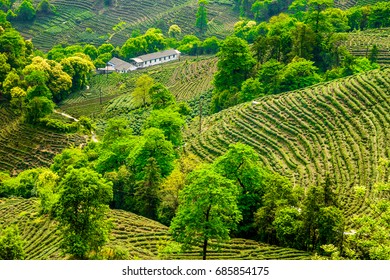
An Essential Guide to Visiting Longjing Tea Plantation
Nestled in the lush, rolling hills just west of West Lake in Hangzhou, the Longjing Tea Plantation (龙井茶园) is a verdant oasis that beckons tea enthusiasts and curious travelers alike. Renowned for producing China’s most celebrated green tea, Longjing, or “Dragon Well,” this picturesque village is steeped in history and surrounded by breathtaking landscapes that have inspired poets and scholars for centuries.
As you wander through the emerald fields, where skilled hands delicately pluck the tender tea leaves, you’ll find yourself immersed in a world where tradition and artistry intertwine. The air is fragrant with the earthy aroma of freshly roasted tea, and the vibrant hues of the tea bushes are a feast for the eyes. Whether you’re a seasoned tea lover or simply looking to experience a slice of Chinese culture, Longjing offers a captivating journey that tantalizes the senses.
Visitors can explore the plantation’s charming pathways, visit the historic tea trees that once impressed an emperor, and savor exquisite brews in local teahouses. With its rich heritage, stunning scenery, and the gentle hum of tea production, Longjing promises an unforgettable adventure that encapsulates the spirit of China’s tea culture. Prepare to be enchanted by the beauty and tranquility of Longjing Tea Plantation as you embark on your exploration of this enchanting destination.
In This Guide
- An Essential Guide to Visiting Longjing Tea Plantation
- The Rich History and Legends of Longjing Tea Plantation
- Main Highlights: What You Absolutely Can’t Miss
- Planning Your Visit: A Practical Guide
- Tickets: Prices, Booking, and Tips
- How to Get There: A Complete Transportation Guide
- Local Cuisine and Accommodation Nearby
- Frequently Asked Questions
- Final Thoughts on Your Trip
The Rich History and Legends of Longjing Tea Plantation
Nestled in the picturesque hills just west of the iconic West Lake in Hangzhou, Longjing Tea Plantation, known for its exquisite green tea, boasts a rich tapestry of history and legends that have captivated tea enthusiasts and travelers alike for centuries. The name “Longjing” translates to “Dragon Well,” a nod to the local wells whose waters are said to flow like a dragon. This enchanting name is but the beginning of a story steeped in tradition and cultural significance.
The roots of tea cultivation in Longjing trace back to the Southern Song Dynasty (12th to 13th centuries), a period marked by artistic flourish and intellectual growth. It was during this time that the area began to attract poets, scholars, and philosophers, drawn not only by the serene beauty of the landscape but also by the exceptional quality of the tea produced here. One notable figure from this era is Ge Hong, a revered philosopher and early practitioner of Traditional Chinese Medicine, who is said to have concocted elixirs using the local tea leaves over 1,675 years ago.
The fame of Longjing tea soared to new heights during the Qing Dynasty in the 18th century, thanks in part to Emperor Qianlong’s admiration for the brew. On one of his visits to West Lake, he was presented with a cup of tea made from leaves picked from eighteen distinguished tea bushes known as the “Royal 18 Trees.” So impressed was the emperor that he bestowed upon these bushes imperial status, forever elevating Longjing tea’s reputation throughout China. Today, visiting the site of these historic bushes offers a glimpse into a legacy that transformed this humble village into one of the wealthiest areas in the region.
Longjing tea is not just a beverage; it’s a symbol of Chinese culture and refinement. The meticulous process of hand-picking and roasting the tea leaves is an art form that has been passed down through generations. The leaves, known for their jade green hue, must meet specific criteria, ensuring only the finest quality is produced. This labor-intensive process, combined with the unique terroir of the region, results in a tea that is light, fresh, and nutty, often compared to the taste of chestnuts.
Legends abound in Longjing, further enriching its narrative. One story tells of a local spring called “Dreaming of the Tiger Spring,” reputed to produce the best water for brewing Longjing tea. Locals believe that the quality of the water, drawn from these ancient wells, is essential to the tea’s unique flavor profile. Visitors to the plantation can explore these springs and wells, each steeped in folklore and history.
For international travelers, a visit to Longjing Tea Plantation is not just about experiencing a renowned tea but also about immersing oneself in a profound cultural heritage. From the tales of emperors and philosophers to the lush green fields where tea is still harvested by hand, Longjing is a destination that offers a rich narrative woven into the very fabric of Chinese civilization. Walking through its tea fields or sipping a freshly brewed cup of Longjing tea, one can truly appreciate the depth of history and the legends that have made this plantation a cherished gem in China’s vast landscape.
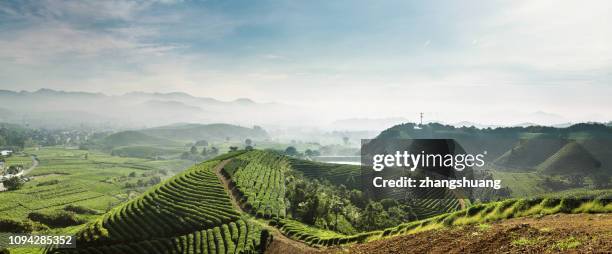
Longjing Tea Plantation.
Main Highlights: What You Absolutely Can’t Miss
Nestled in the picturesque hills just west of West Lake in Hangzhou, the Longjing Tea Plantation, also known as Dragon Well Tea, is a must-visit destination for international travelers seeking to immerse themselves in the rich culture of Chinese tea. Here are the main highlights you absolutely can’t miss during your visit:
The Tea Fields
The lush, terraced hills of the Longjing Tea Plantation are where the magic begins. Stroll through the vibrant green rows of tea bushes and marvel at the skilled workers harvesting the tender leaves. This scenic landscape is not only a feast for the eyes but also an authentic glimpse into the traditional tea cultivation process that has been celebrated for centuries. Early April, around the Tomb Sweeping Festival, is the perfect time to witness the bustling activity of tea picking.
Dreaming of the Tiger Spring
This renowned spring is said to produce the finest water for brewing Longjing tea. The water’s unique qualities enhance the tea’s flavor, making it a vital part of the tea-making process. Although it’s not located directly in Longjing Village, it’s a short walk away and is worth a visit for its serene environment and beautiful surroundings.
Longjing Tea Cultural Experience
Immerse yourself in the local tea culture by visiting a traditional teahouse. Here, you can enjoy a freshly brewed cup of Longjing tea while learning about its history and significance. The tea is typically served in transparent, handle-less cups, allowing you to watch the leaves unfurl and sink as they steep. Expect a flavor profile that’s fresh, delicate, and reminiscent of roasted chestnuts.
China National Tea Museum
A short walk from the tea fields, this museum is an enlightening stop that showcases the history and culture of tea in China. Admission is free, and you can explore various exhibits that cover everything from the origins of tea to its different types and brewing techniques. Don’t miss the outdoor grounds, where you can wander through more tea fields and enjoy the tranquil atmosphere.
Green Tea Restaurant
Located conveniently near the museum, this popular dining spot is renowned for its delicious local cuisine and, of course, its Longjing tea. Enjoy dishes made with seasonal ingredients, such as fish in a fragrant golden soup or local greens served in artistic presentations. The restaurant’s picturesque setting next to a pond makes for a delightful dining experience.
The Royal 18 Trees
Visit the historic site of the Royal 18 Trees, where legend has it that Emperor Qianlong was served Longjing tea centuries ago. These tea bushes have been granted imperial status and represent the pinnacle of Longjing tea production. The journey to this site is steeped in history and offers a fascinating insight into the tea’s royal connections.
Stunning Landscapes
Beyond the tea itself, the natural beauty of Longjing cannot be overlooked. The area is dotted with cherry blossom trees, especially beautiful in early spring, creating a stunning backdrop for photos. Make sure to take a leisurely walk around the village to soak in the breathtaking views and capture some memorable snapshots.
Local Souvenirs
Before you leave, don’t forget to pick up some Longjing tea to take home. The prices can be a bit confusing, so it’s advisable to ask for recommendations or guidance from locals or shopkeepers to ensure you’re purchasing authentic, high-quality tea.
Visiting the Longjing Tea Plantation is not just about tasting one of China’s most famous teas; it’s an opportunity to delve into a cultural tradition that dates back over a thousand years. From the stunning landscapes to the rich history, this destination offers a unique experience that will leave you with lasting memories.
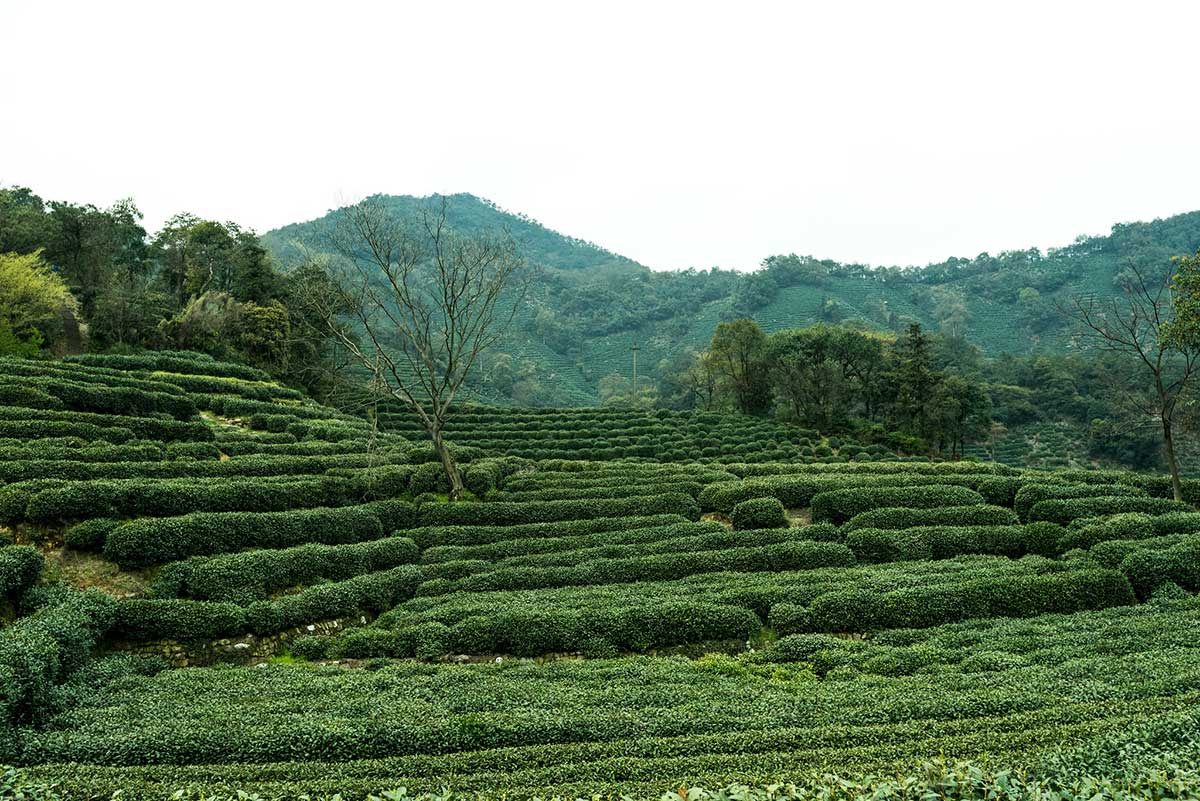
Longjing Tea Plantation.
Planning Your Visit: A Practical Guide
Visiting the Longjing Tea Plantation is a delightful experience that immerses you in the rich history and culture of one of China’s most famous teas. Here’s how to make the most of your journey to this picturesque destination near Hangzhou.
Getting There
From Shanghai:
The quickest way to reach Longjing is via the High-Speed Rail (HSR) from Shanghai to Hangzhou. Tickets can be purchased through various platforms, including Trip, which allows for advance booking. The train ride takes about an hour, and once in Hangzhou, you can take the Hangzhou Metro to West Lake (Xi Hu).
To Longjing Village:
From West Lake, you have several options:
– Taxi/Didi: A convenient option if you’re short on time or traveling with a group. The fare is quite affordable.
– Bus: Take bus #27 from the road along the north shore of West Lake directly to Longjing Village. This is a budget-friendly option, but be sure to check the timetable.
– Walking: If you’re up for it, a leisurely two-hour walk along the northern shore of West Lake offers stunning views and a chance to soak in the local atmosphere.
Best Time to Visit
The ideal time to visit Longjing is in early April, coinciding with the Tomb Sweeping Festival, which marks the beginning of the tea harvest season. This is when you can witness workers picking fresh tea leaves and enjoy the beauty of cherry blossoms in the area. However, avoid the holiday itself, as the crowds can be overwhelming.
What to Do
Explore the Tea Fields:
Once in Longjing, take a stroll through the lush tea plantations. The scenery is breathtaking, with rolling hills and neatly arranged tea bushes. Don’t hesitate to chat with local tea farmers, who may be happy to share their knowledge and experience.
Visit the China National Tea Museum:
Just a short distance from Longjing Village, the museum offers free entry and showcases the history and cultural significance of tea in China. Expect informative exhibits with bilingual signage, making it accessible for international visitors.
Dining at Green Tea Restaurant:
Don’t miss the chance to dine at the Green Tea Restaurant, known for its delicious local cuisine. Enjoy a meal overlooking a serene pond, and make sure to order a cup of authentic Longjing tea to complement your dish.
Tips for Purchasing Tea
When buying Longjing tea, be prepared for a range of prices based on quality. High-quality Longjing can be quite expensive, sometimes costing more than its weight in gold. Look for reputable shops in Longjing Village or ask locals for recommendations. Sample the tea before buying if possible, and familiarize yourself with the key terms, such as “one flag, one spear” to identify premium leaves.
Additional Considerations
- Language: While some signage is in English, knowing a few Mandarin phrases can be helpful.
- Cashless Payments: Mobile payment options like Alipay and WeChat Pay are widely used, so consider downloading these apps for convenience.
- Respect Local Customs: When interacting with locals, show appreciation for their work and culture, especially in the tea fields.
Conclusion
A visit to Longjing Tea Plantation offers a unique blend of natural beauty, cultural immersion, and culinary delights. Whether you’re a tea enthusiast or a curious traveler, this enchanting destination is sure to leave a lasting impression. Plan your visit thoughtfully, and you’ll enjoy an unforgettable experience in the heart of China’s tea heritage.
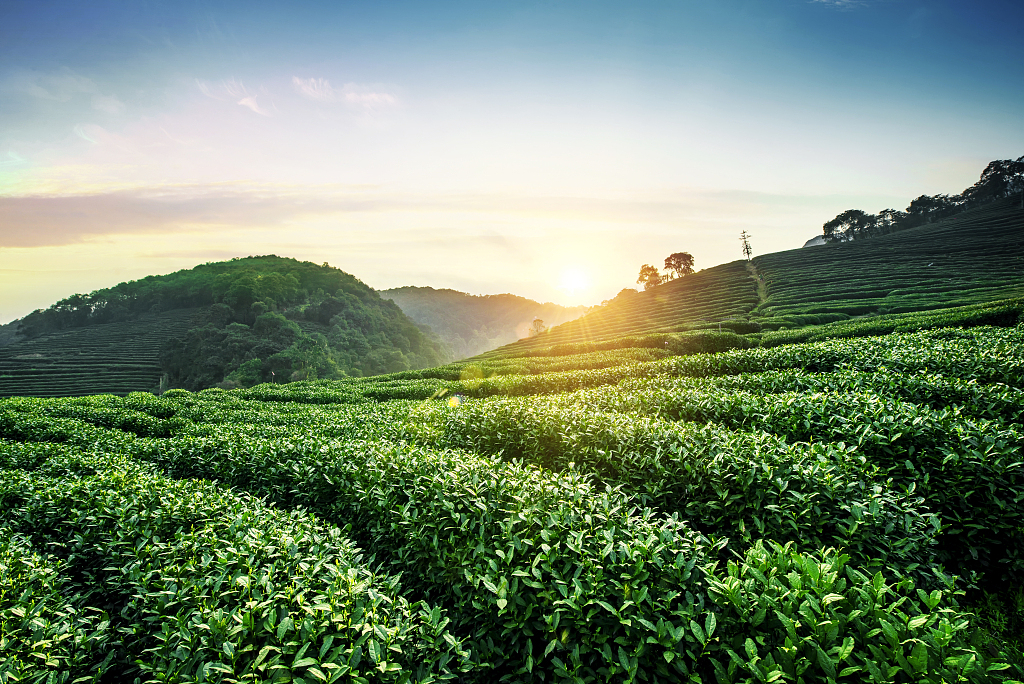
Longjing Tea Plantation.
Tickets: Prices, Booking, and Tips
Visiting the Longjing Tea Plantation is an enchanting experience that combines the beauty of lush tea fields with the rich cultural history of tea in China. If you’re planning a trip, here’s what you need to know about tickets, prices, and some handy tips to enhance your visit.
Entrance Fees and Ticket Information
China National Tea Museum: Entry to the China National Tea Museum, located near Longjing, is completely free. This makes it an excellent addition to your itinerary, allowing you to explore the history and culture of tea without worrying about costs.
Longjing Tea Village: There is no formal entrance fee to visit the Longjing Tea Village itself. You can wander through the picturesque fields, observe tea pickers at work, and enjoy the stunning scenery at your leisure.
Booking Tips
-
Transportation Tickets: If you’re traveling from Shanghai, consider booking your High-Speed Rail (HSR) tickets in advance. Using platforms like Trip allows you to secure your tickets early, ensuring you have a stress-free journey. Prices for HSR tickets vary but typically range from approximately 50 to 150 RMB (about $8 to $23) depending on the class of service and how far in advance you book.
-
Guided Tours: If you prefer a more structured experience, several tour operators offer guided trips to Longjing Tea Village, which often include transportation, tea tastings, and insights into tea production. Websites like Klook or Trip can help you find reputable tours that fit your schedule and budget.
Additional Costs
Once at Longjing, here are some potential expenses to keep in mind:
-
Tea Purchases: Quality Longjing tea can be quite pricey, often worth more than its weight in gold, depending on the grade. Expect to pay anywhere from 200 RMB ($30) for a basic grade to over 2,000 RMB ($300) for premium offerings. Always sample before you buy to ensure you’re getting the flavor you desire.
-
Dining: If you’re planning to have a meal at places like the Green Tea Restaurant, budget around 100 to 200 RMB ($15 to $30) per person for a delightful dining experience featuring local cuisine.
Practical Tips
-
Timing Your Visit: To catch the tea harvesting season and enjoy pleasant weather, plan your visit around early April during the Tomb Sweeping Festival. However, avoid the long weekend crowds by going right after the holiday.
-
Navigating the Area: Public buses (like Bus #27) are an economical way to travel between West Lake, the China National Tea Museum, and Longjing Village. Alternatively, Didi (China’s version of Uber) offers a convenient option for a small fee.
-
Bring Cash: While many places accept mobile payments like Alipay or WeChat Pay, having some cash on hand can be helpful for small purchases or in places that may not accept cards.
With this information, you’re well-equipped to enjoy your visit to the Longjing Tea Plantation, immersing yourself in one of China’s most celebrated cultural experiences. Happy travels!
How to Get There: A Complete Transportation Guide
Getting to Longjing Tea Plantation (龙井茶园) is an adventure that promises a blend of scenic beauty and cultural immersion, making it a must-visit for any tea enthusiast or traveler exploring China. Here’s how you can navigate your way to this iconic tea village in Hangzhou.
From Shanghai to Hangzhou
High-Speed Rail (HSR)
The most convenient and efficient way to reach Longjing from Shanghai is via the High-Speed Rail (HSR). The journey takes approximately one hour, making it an ideal day trip option. Tickets can be booked through platforms like Trip, which allows you to secure your tickets in advance, ensuring a hassle-free experience.
- Departure Stations: Shanghai has several HSR stations, with Hongqiao Station being the most commonly used for trains heading to Hangzhou.
- Arrival Station: You will arrive at Hangzhou East Railway Station (杭州东站), a modern hub with excellent connectivity.
Getting from Hangzhou to Longjing
Once you arrive in Hangzhou, you have a few options to reach Longjing Tea Plantation:
1. Public Transportation (Bus)
For a budget-friendly option, take Bus #27 from the north shore of West Lake. This bus stops at significant points, including the China National Tea Museum and Longjing Village.
- Bus Stop: Look for the bus stop at the northern edge of West Lake. You can check times and stops using Baidu Maps or Apple Maps (Google Maps is often unreliable in China).
2. Didi (Ride-Hailing Service)
Didi, China’s equivalent to Uber, is a convenient way to travel directly to Longjing. Simply download the Didi app and request a ride. This option may be slightly more expensive than the bus but offers convenience and saves time.
3. Taxi
Taxis are readily available and can take you directly to Longjing Village. It’s a short drive, typically costing around 30-50 RMB depending on traffic.
Exploring Longjing Village
Once you arrive in Longjing, the village is compact and easily walkable. Here are a few tips for exploring:
- Walking: If you enjoy walking, you can cover the main attractions on foot. The area is picturesque, with tea fields and traditional architecture providing ample opportunities for beautiful photos.
- Local Attractions: Don’t miss the China National Tea Museum, which is a short walk from the village. It offers free admission and fascinating exhibits about tea culture in China.
Returning to Hangzhou
After your visit, you can easily return to Hangzhou:
- Bus #27: If you took the bus to Longjing, it’s just as easy to return the same way.
- Didi or Taxi: For a quicker return, especially if time is of the essence, consider hailing a Didi or taxi.
Final Tips
- Timing Your Visit: Aim to visit during the tea harvest season, which begins around early April, to witness the vibrant tea picking process and enjoy the pleasant spring weather.
- Avoiding Crowds: If possible, avoid weekends and public holidays, as these times can be particularly crowded.
With this guide, you’re well-equipped to make the journey to Longjing Tea Plantation and immerse yourself in the rich history and culture of one of China’s most famous tea-producing regions. Enjoy your tea adventure!
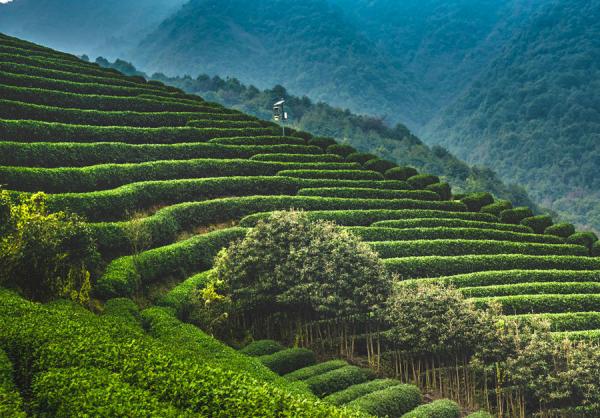
Longjing Tea Plantation.
Local Cuisine and Accommodation Nearby
Exploring the Longjing Tea Plantation is not just about the exquisite tea; it also offers a delightful culinary experience and cozy accommodations that enhance your visit. Here are some recommendations to ensure you savor every moment of your stay in this picturesque region.
Culinary Delights
Green Tea Restaurant (绿茶餐厅)
Located conveniently on the way to the tea plantation, Green Tea Restaurant is a must-visit. Nestled beside the China National Tea Museum, this charming eatery serves up local delights with a stunning view of a serene pond. Popular dishes include the local green called malantou and fish in golden soup, both rich in flavor and beautifully presented. The restaurant also offers complimentary tea with meals, but be sure to order a glass of authentic Longjing tea to truly appreciate the local flavor. Expect a modern ordering system through QR codes, making it both efficient and straightforward.
Longjing Restaurant (龙井茶馆)
For a more traditional experience, head to Longjing Restaurant, located within the village itself. Here, you can enjoy a variety of dishes made with fresh, locally sourced ingredients. The highlight is the Longjing tea-infused dishes. Don’t miss their Longjing shrimp and the green tea noodles, which beautifully showcase the region’s famed tea.
Local Street Vendors
As you wander through Longjing village, keep an eye out for local street vendors selling snacks like tea eggs and zongzi (sticky rice dumplings). These quick bites offer a taste of local culture and are perfect for enjoying between tea tastings.
Where to Stay
Longjing Tea House (龙井茶舍)
For an immersive experience, consider staying at the Longjing Tea House. This cozy accommodation option offers rooms with stunning views of the tea fields and is designed in a traditional Chinese style. Guests can enjoy tea tastings right at the property and receive insights from knowledgeable staff about the tea-making process.
Hangzhou West Lake Youth Hostel (杭州西湖青年旅舍)
If you’re looking for budget-friendly accommodation, the Hangzhou West Lake Youth Hostel is a great option. Located a short distance from West Lake and Longjing, it offers dormitory-style and private rooms. The vibrant atmosphere is perfect for meeting fellow travelers, and the hostel organizes local tours, including visits to the tea plantation.
The Azure Qiantang, a Luxury Collection Hotel (青塘酒店)
For those seeking luxury, The Azure Qiantang is a splendid choice. With its elegant rooms and top-notch amenities, this hotel is located a bit farther from Longjing but offers stunning views of the Qiantang River. After a day of exploring, unwind at their spa or enjoy a fine dining experience featuring local cuisine with a modern twist.
Final Thoughts
A trip to Longjing is not complete without indulging in its local cuisine and enjoying the warm hospitality of its accommodations. Whether you choose a local restaurant or a luxurious hotel, the flavors and experiences here will leave a lasting impression and complement your exploration of one of China’s most iconic tea-producing regions.

Longjing Tea Plantation.
Frequently Asked Questions
Frequently Asked Questions about Longjing Tea Plantation
-
What is Longjing Tea and why is it famous?
Longjing tea, also known as Dragon Well tea, is a renowned green tea from Longjing village in Hangzhou, China. Its fame stems from its rich history, unique flavor profile, and the fact that it is one of the most celebrated teas in China, with some varieties fetching prices higher than gold. -
How do I get to the Longjing Tea Plantation from Shanghai?
The easiest way to reach Longjing from Shanghai is to take the High-Speed Rail (HSR) to Hangzhou, which takes about an hour. Once in Hangzhou, you can take a taxi or bus (#27) directly to Longjing village. Alternatively, consider booking a guided tour for a more streamlined experience. -
What is the best time to visit Longjing?
The ideal time to visit Longjing is during the early spring, particularly around the Tomb Sweeping Festival in early April, which marks the start of the tea harvest. This is when you can see workers picking tea leaves and enjoy pleasant weather. However, be mindful of long weekends, as they tend to attract large crowds. -
Are there any guided tours available?
Yes, there are numerous guided tours to Longjing available through platforms like Klook or Trip. These tours often include transportation, tea tastings, and sometimes even visits to local teahouses or the China National Tea Museum. -
Can I buy Longjing tea directly from the plantation?
Absolutely! There are various shops and vendors in the Longjing area where you can purchase authentic Longjing tea. Prices can vary significantly, so it’s advisable to ask for recommendations and compare different vendors to ensure you’re getting a fair price. -
What should I wear when visiting Longjing?
Given that you’ll likely be walking through tea fields and potentially hiking a bit, comfortable footwear is essential. Dress in light layers, especially if you’re visiting in spring or autumn, as temperatures can fluctuate. Don’t forget a hat and sunscreen if you’re visiting on a sunny day! -
Is there an entrance fee for the China National Tea Museum?
No, entrance to the China National Tea Museum is free. The museum offers a wealth of information about tea history and culture, with many exhibits featuring both Mandarin and English signage, making it accessible for international travelers. -
What dining options are available near Longjing?
One highly recommended spot is the Green Tea Restaurant, located near the China National Tea Museum. It offers a variety of local dishes, including delicious meals featuring seasonal ingredients. Reservations may be required during peak hours, so plan accordingly!
Final Thoughts on Your Trip
As your journey through the enchanting Longjing Tea Plantation draws to a close, take a moment to reflect on the rich tapestry of experiences that this unique destination offers. From the lush, green hillsides where skilled hands harvest delicate tea leaves to the serene beauty of West Lake, every corner of Longjing whispers the timeless artistry of tea culture.
Indulge in the fresh, nutty flavors of Longjing tea, often regarded as the finest green tea in China, and let each sip transport you to the very fields where it is grown. Wander through the historic village, where poetry and philosophy have flourished for centuries, and feel the weight of a legacy steeped in tradition.
Whether you’ve explored the vibrant teashops, marveled at the artistry in the China National Tea Museum, or simply basked in the breathtaking natural beauty, Longjing has undoubtedly left an indelible mark on your heart. As you continue your travels, carry the spirit of this remarkable place with you, and remember that your experience here is not just a visit—it’s a journey into the essence of Chinese tea culture. Embrace the adventure that lies ahead, and let the memories of Longjing infuse your travels with warmth and inspiration.